EcoVillage – the connected way of living
By Signe Hansen | Photos: EcoVillage
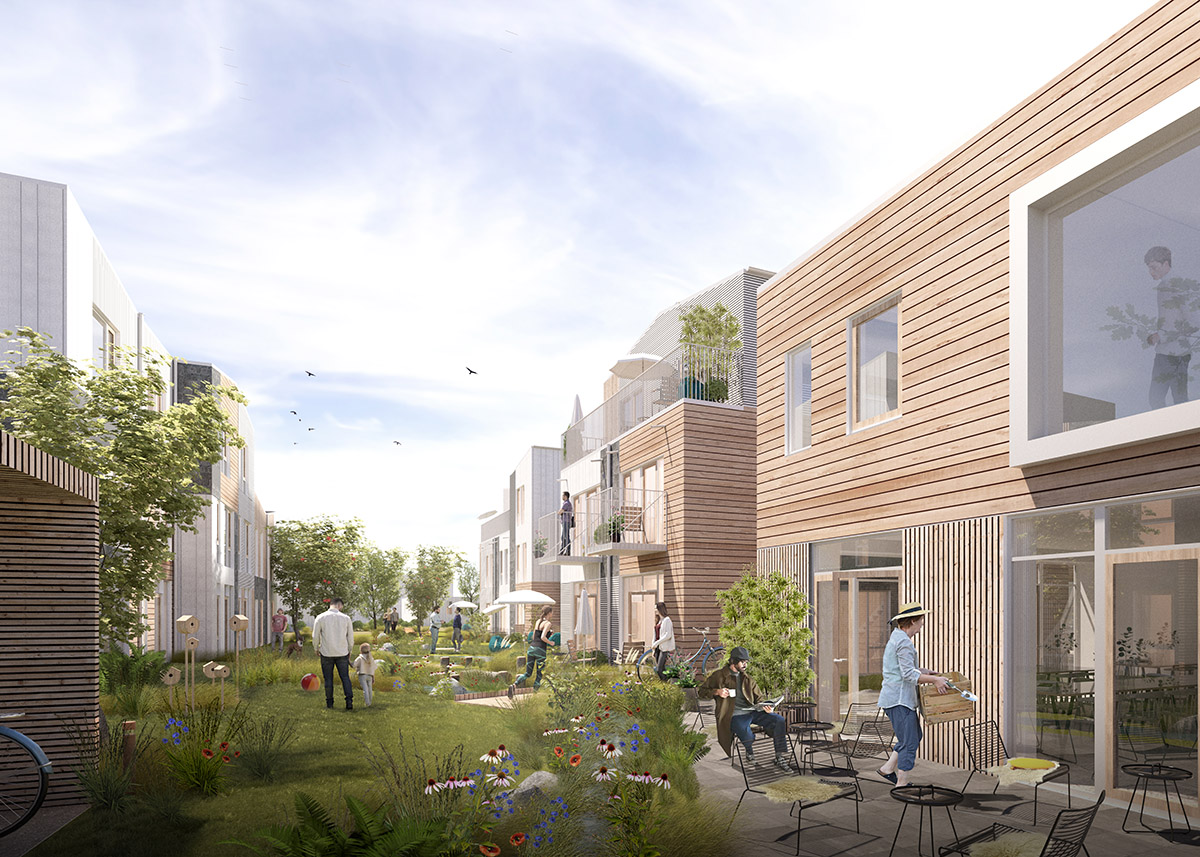
Photo: C.F. Møller
As moving between regions, countries and even continents has become part of modern-day life, many grieve the ensuing lack of local networks and community feeling. Danish EcoVillage offers a solution on multiple levels, with modern co-housing villages with shared facilities, communal dinners, and attractive eco-friendly living units.
With multiple commitments and high ambitions, many people struggle to find time in their everyday lives for social relations. As a consequence, surveys show that more and more people suffer from the downsides of our modern-day life – loneliness, isolation, and stress. With this in mind, it is perhaps not surprising that the EcoVillage concept has proven a decided success.
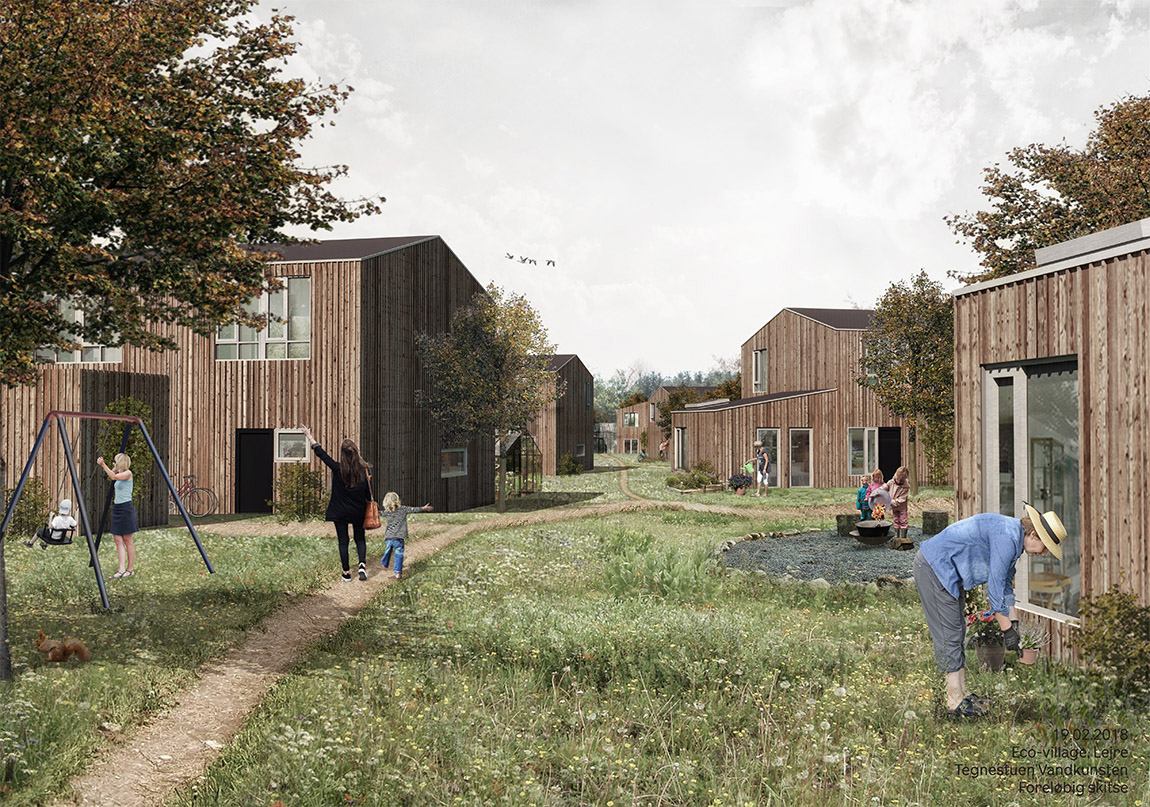
Photo: Vandkunsten
With four dinners a week prepared and enjoyed communally, shared recreational areas, and a strong and safe community, the villages provide both pragmatic and idealistic solutions to the problems above. “From Monday to Thursday, we eat together, and not having to cook, shop, and clean these days, practically means getting an extra one to two hours of free time every day,” explains Rikke Amalie Søndler, an inhabitant of Grønne Eng EcoVillage and the founder of EcoVillage. “Moreover, the dinners offer a chance for casual social encounters and to build strong community bonds.”
The communal organic dinners are prepared by inhabitants, who each have two kitchen days a month, and are one of the cornerstones of the EcoVillage concept. They are based on a functional and flexible solution that allows all inhabitants to join but also gives them the option to opt out or take away their dinner to enjoy at their own place when necessary.
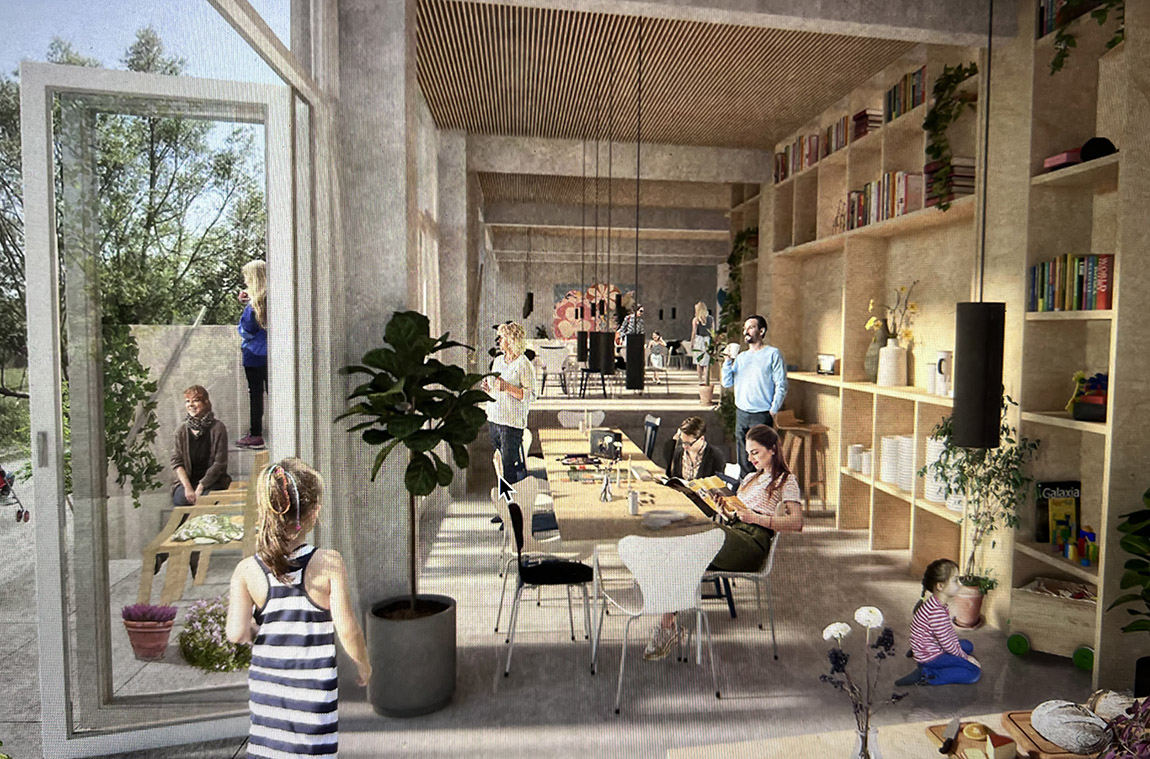
Breaking the circle of isolationism
When Søndler first had the idea for the EcoVillage concept, it was nourished by a combination of despair at the self-contradictory ideal of traditional villa life and her childhood memories of visiting friends at a traditional Danish cohabitation. “Being a child there was great, and back then I thought – if I ever have a kid, I want to live like that,” she says. Nonetheless, Søndler ended up in a traditional villa setting. “One day, looking at my tall hedges, I thought – it’s just ridiculous, spending this much time and effort on maintaining all of this when what I really want is to spend more time around people.”
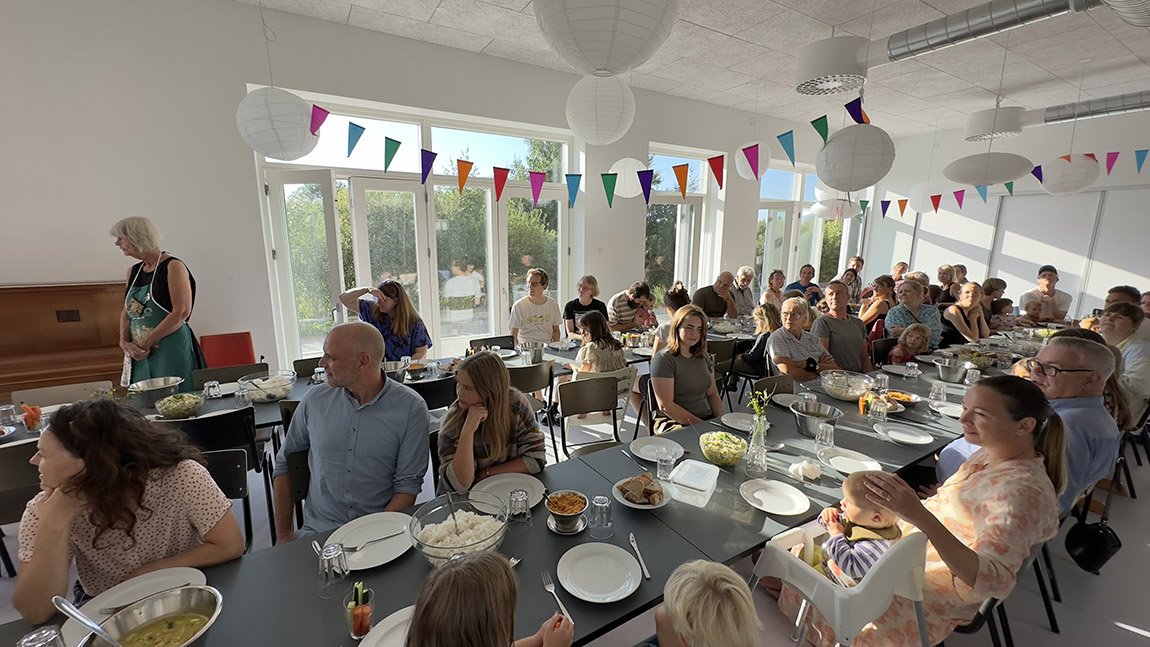
Four communal dinners a week offer the EcoVillage’s inhabitants both social and practical benefits.
One of the ambitions driving Søndler was to break the circle of structural loneliness, the mechanism by which people, who are structurally isolated in their homes, also tend to become more introverted and perhaps lonely. ”Being around people in a non-hierarchical and relaxed manner automatically makes social relations less complicated. It does not have to involve making a big fuss to have people over – it might just be a casual talk in our library, a beer in our small bar, or a chat over dinner. Actually, it’s almost impossible to be lonely here. You would have to really isolate yourself, and that’s not why people come here – they want to know their neighbours,” stresses Søndler.
A sustainable life choice
Another leading ambition for the EcoVillage project was to create a more sustainable way of living. As shared facilities such as offices and guest rooms automatically reduce the number of square meters per inhabitant, the concept inherently has a lower carbon footprint than regular living units. Moreover, all villages have top environmental certifications for both construction and energy consumption and are located close to public transport links. Elements such as solar panels, rainwater collection, and shared electric vehicles further add to the sustainable profile of the villages. “It has been one of the main criteria for us, and we are very proud to have received the highest levels of certifications,” stresses Søndler.
A strong local network is part of the package
With four villages currently finished and one more underway, the EcoVillage concept has proven a huge success with people of all ages. The living units are designed to house all possible living constellations, from singles to families, singles with children, and seniors. Moreover, due to the immediate inclusion in a local network and community, the villages have proven popular with people relocating from other regions or countries. “We have quite a few couples who have moved back to Denmark after some years abroad, but also many Swedes, Americans, and Norwegians,” adds Søndler. “It offers them a quick entry into a well-established local network and community.”
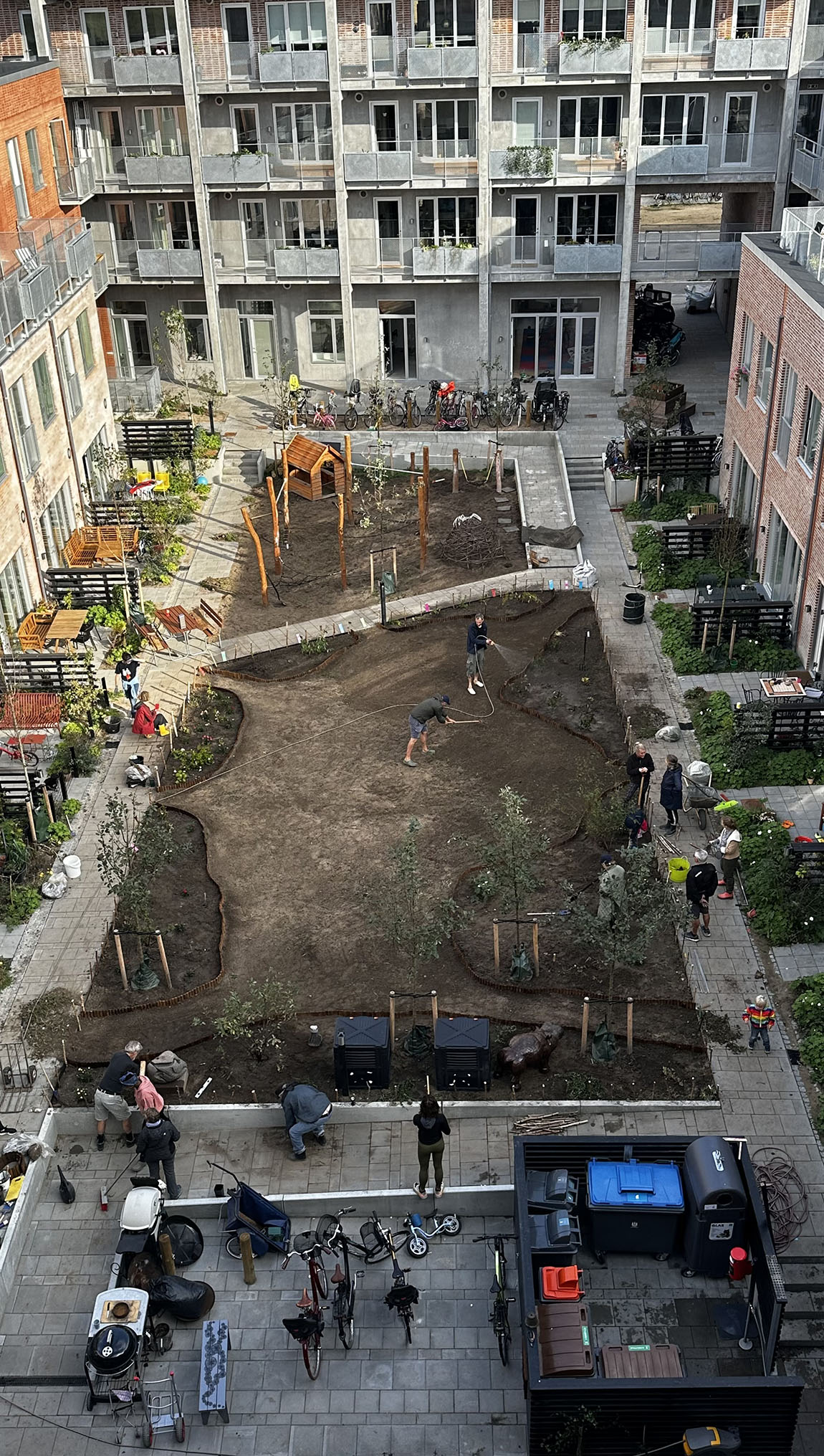
The Grønne Eng cohabitation village in Copenhagen is a highly sought-after alternative to traditional urban living areas.
Web: www.eco-village.dk
Facebook: ecovillagedk
Instagram: @ecovillage2020
EcoVillage in short:
EcoVillage has four finished cohabitation villages: Grønne Eng in Ørestad, Copenhagen, Skråningen 1 and 2 in Lejre, and Rullestenen in Roskilde, and a fifth village is underway in Måløv, north of Copenhagen.
The villages consist of around 40-50 private living units (flats and terraced houses) of 55-145m2, as well as 500- 725m2 of shared facilities that include a large communal kitchen and dining hall, offices, lounge, teenage dens, guest rooms, laundry, fitness room, and more.
The villages are inhabited by people of all ages from 0-96 years, about 30 per cent are seniors.
Subscribe to Our Newsletter
Receive our monthly newsletter by email





